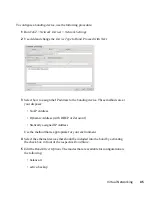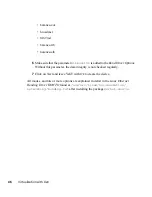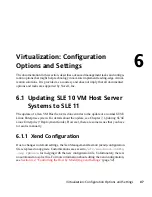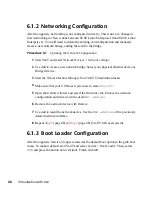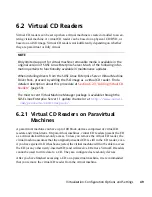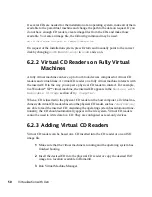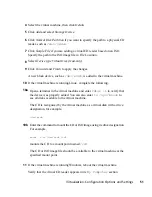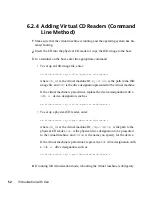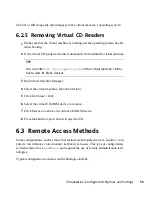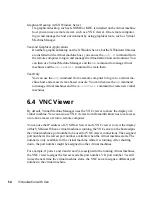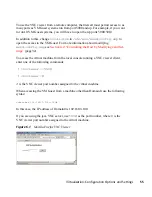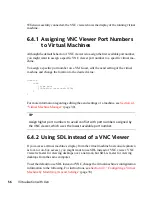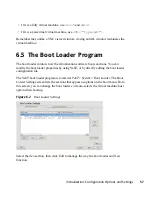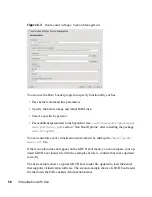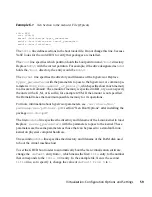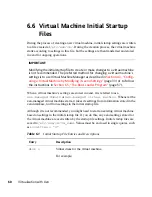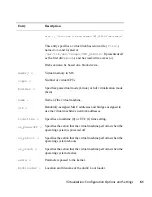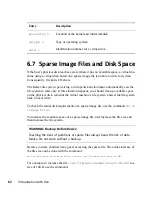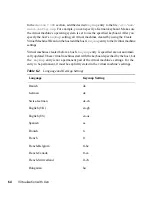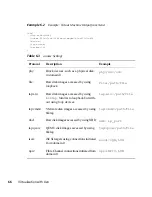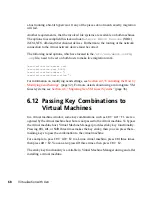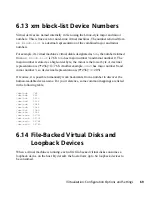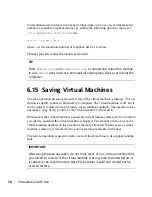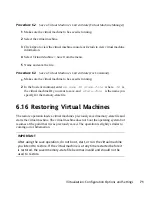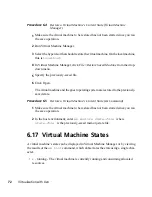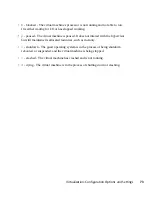
Example 6.1
Xen Section in the menu.lst File (Typical)
title XEN
root (hd0,5)
kernel /boot/xen.gz
hyper_parameters
module /boot/vmlinuz-xen
kernel_parameters
module /boot/initrd-xen
The
title
line defines sections in the boot loader file. Do not change this line, because
YaST looks for the word XEN to verify that packages are installed.
The
root
line specifies which partition holds the boot partition and
/boot
directory.
Replace
hd0,5
with the correct partition. For example, if the drive designated as
hda1
holds the
/boot
directory, the entry would be
hd0,0
.
The
kernel
line specifies the directory and filename of the hypervisor. Replace
hyper_parameters
with the parameters to pass to the hypervisor. A common pa-
rameter is
dom0_mem=<amount_of_memory>
, which specifies how much memory
to allocate to Domain0. The amount of memory is specified in KB, or you can specify
the units with a K, M, or G suffix, for example 128M. If the amount is not specified,
the Domain0 takes the maximum possible memory for its operations.
For more information about hypervisor parameters, see
/usr/share/doc/
packages/xen/pdf/user.pdf
section “Xen Boot Options” after installing the
package
xen-doc-pdf
.
The first
module
line specifies the directory and filename of the Linux kernel to load.
Replace
kernel_parameters
with the parameters to pass to the kernel. These
parameters are the same parameters as those that can be passed to a standard Linux
kernel on physical computer hardware.
The second
module
line specifies the directory and filename of the RAM disk used
to boot the virtual machine host.
To set the GRUB boot loader to automatically boot the Xen virtualization software,
change the
default
entry from
0
, which means the first
title
entry, to the number
that corresponds to the
title XEN
entry. In the example file, Xen is the second
title
line, so to specify it, change the value of
default from 0
to
1
.
Virtualization: Configuration Options and Settings
59

